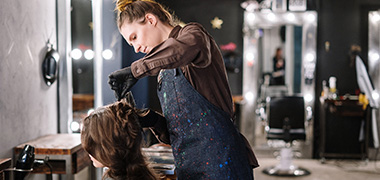
AI Occupational Exposure score unavailable For more insight, research the specific tasks and skills required for the role.
Explore all careersA Sewing Machinist operates sewing machines to produce fabric items, requiring technical skills, teamwork, and attention to detail.
Get qualified to work as a Sewing Machinist with a course recognised across Australia. Speak to a training provider to learn more.
Browse occupations related to Sewing Machinist
In Australia, a full time Sewing Machinist generally earns $1,010 per week ($52,500 annual salary) before tax. This is a median figure for full-time employees and should be considered a guide only. As you gain more experience you can expect a potentially higher salary than people who are new to the industry.
 Courses.com.au Team
Courses.com.au Team
There has been strong employment growth in this industry over the last five years. There are currently 10,500 people working as a Sewing Machinist in Australia and this number is expected to remain stable in coming years. Sewing Machinists may find work across all regions of Australia.
Source: Australian Government Labour Market Insights
 Courses.com.au Team
Courses.com.au Team
If you’re planning a career as a Sewing Machinist, consider enrolling in a Certificate III in Upholstery. This course covers a range of topics including taking measurements, costing out a job, using standard tools and equipment, assembling and disassembling furniture, cutting and sewing fabric and applying final coverings.
 Courses.com.au Team
Courses.com.au Team



A Sewing Machinist operates machinery used in a clothing or fabric factory. You might use sewing machines to produce clothing, furnishings and other fabric items. Sewing Machinists may work with patterns and designs and use a range of sewing equipment. You may have to maintain your machinery or organise repairs when needed.
Sewing Machinists should have excellent technical skills and be able to adapt their abilities to suit various products. It’s important you can work as part of a team and display strong attention to detail. Sewing Machinists must be able to manage their time well and work to a deadline. You should be able to work with patterns or use measurements and specifications.